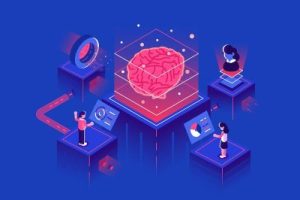 The National Defense Strategy (NDS) sets the strategic direction for our military to meet the security threats of tomorrow. Overall, the Defense Strategy focuses on China and Russia as the primary adversaries, but it also emphasizes the importance of global cooperation among allies as well as adversaries to meet threats that are bigger than any one country including climate change, food insecurity, and pandemics. The defense strategy lays out three primary tactics for advancing U.S. and global security.
The National Defense Strategy (NDS) sets the strategic direction for our military to meet the security threats of tomorrow. Overall, the Defense Strategy focuses on China and Russia as the primary adversaries, but it also emphasizes the importance of global cooperation among allies as well as adversaries to meet threats that are bigger than any one country including climate change, food insecurity, and pandemics. The defense strategy lays out three primary tactics for advancing U.S. and global security.
Integrated Deterrence
The practice of integrated deterrence involves working closely across all branches of the military, warfighting domains, and even across other federal entities to ensure national security. It expands responsibility for deterring adversaries beyond the Department of Defense (DoD), involving the intelligence community, health agencies, environmental agencies, and more. Continue reading



 Machine Learning (ML) and other aspects of Artificial Intelligence (AI) are becoming a critical part of government modernization plans. The fear that "machines will replace people" has largely disappeared. In fact, people see the benefit that ML provides for human workers. ML technology allows machines to do what they are best at - fast computation of large data sets - freeing up humans to do what they do best - analyzing and making sense of the data produced.
Machine Learning (ML) and other aspects of Artificial Intelligence (AI) are becoming a critical part of government modernization plans. The fear that "machines will replace people" has largely disappeared. In fact, people see the benefit that ML provides for human workers. ML technology allows machines to do what they are best at - fast computation of large data sets - freeing up humans to do what they do best - analyzing and making sense of the data produced. In an era where we're often asked to "do more with less," government is finding the need to do more with more when it comes to data. There is no lack of data within government systems. The challenge has always been getting the right access to it and then making it usable. Data can go a long way in helping meet key government-wide goals of better customer experience and increased equity in government service. There are a number of interesting applications of Big Data solutions across government to illustrate the power of data to make a difference.
In an era where we're often asked to "do more with less," government is finding the need to do more with more when it comes to data. There is no lack of data within government systems. The challenge has always been getting the right access to it and then making it usable. Data can go a long way in helping meet key government-wide goals of better customer experience and increased equity in government service. There are a number of interesting applications of Big Data solutions across government to illustrate the power of data to make a difference. Agile is not a technology but rather
Agile is not a technology but rather  Artificial Intelligence (AI) is becoming a key tool in the arsenal of the U.S. military. In 2022, the Department of Defense (DoD) launched the
Artificial Intelligence (AI) is becoming a key tool in the arsenal of the U.S. military. In 2022, the Department of Defense (DoD) launched the 
